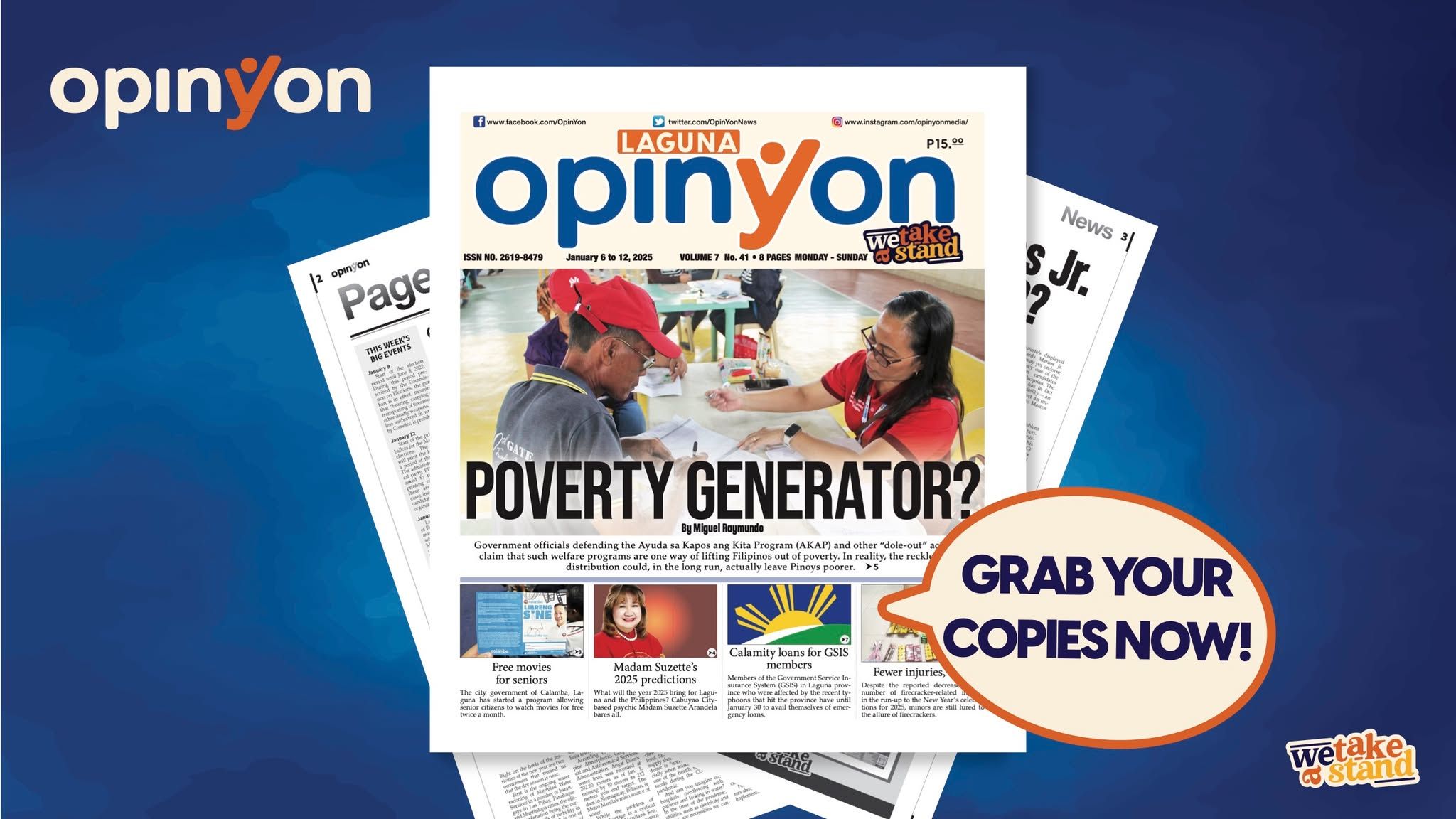Twenty-six billion pesos. That’s how much the national government has decided to allocate to the controversial Ayuda sa Kapos ang Kita Program (AKAP) in the P6.235-trillion national budget that was finally signed by President Ferdinand “Bongbong” Marcos, Jr. on December 30, 2024.
The inclusion of the billions of pesos in this program (ostensibly led by the Department of Social Welfare and Development, or DSWD) has been decried by various sectors, and for a number of reasons.
For one, with politicians shamelessly ingratiating themselves in other welfare programs supposedly led by the DSWD – particularly the Assistance to Individuals in Crisis Situations (AICS) – some analysts believe that the billions allocated in AKAP could just as well be a ready “slush fund” for candidates this coming May 2025 elections.
But let’s set aside the political aspect of AKAP for now, and tackle what should be the more important question: do these dole-outs actually lift Filipinos out of poverty, as their proponents and supporters claim?
The issue of mendicancy
Critics of the AKAP, AICS and other welfare programs have long lamented that these programs, far from encouraging Filipinos to work harder and improve their quality of life, actually made them “mendicants” who would rather wait for financial assistance.
This, despite assurances from government officials that AKAP, like other welfare programs such as the Pantawid Pamilyang Pilipino Program (4Ps), will be implemented under strict guidelines.
‘Yung AKAP po is still there. It’s just that, bago natin ma-release ‘yung pondo, we need to issue guidelines po together with DSWD, DOLE and NEDA para maging consistent ‘yung pagbibigay ng AKAP sa tamang recipients at hindi magdoble-doble 'yung binibigay natin na mga cash assistance,” Budget Secretary Amenah Pangandaman was quoted as saying during the signing of the 2025 budget.
Self-rated poverty, inflation
But the fact remains that despite the billions in pesos that were allocated in various welfare programs, the economy in general has not been conducive enough in lifting Filipinos living near or below the poverty line.
Take a look at this survey conducted by the Social Weather Stations (SWS) last September 14 to 23, 2024, where 59 percent of Filipino families rated themselves as poor – up from the 58 percent recorded in a similar study in June.
According to SWS, this translates into 16.3 million Filipino families who see themselves as poor, or a 300,000 increase from 16 million in June.
The study also showed that 9.1 percent of families are “Newly Poor” or did not consider themselves as poor 1 to 4 years ago. This translated to 2.5 million families classified as Newly Poor. Meanwhile 2.3 million families were Usually Poor, and 11.5 million were Always Poor.
"The September 2024 median monthly family expense for House rent was highest in Metro Manila at P3,500," SWS said.
The median expenses for Transportation to work and school were also highest in Metro Manila at P2,500.
The next month, October, consumers were greeted with the news that the country's inflation rate jumped from 1.9 percent in September to 2.3 percent in October.
Inflation further accelerated to 2.5 percent in November, following a series of devastating typhoons that ravaged parts of Luzon and Visayas, including Laguna province.
Sources of funds
Another question at the heart of the AKAP issue is: where will the government obtain the billions of "ayuda" funds?
It should be noted that the government's total outstanding debt surpassed P16 trillion as of the end of October 2024, mainly due to the impact of the depreciation of the peso against the US dollar.
The only logical conclusion would be to increase taxes somehow, which in turn could also drive inflation.
Coincidentally, in that same month, President Marcos signed Republic Act 12023, which imposes a 12-percent value-added tax (VAT) on companies that offer digital services to Filipino consumers, including online marketplaces.
Poorer Pinoys?
And just as the country had prepared itself to go back to work from celebrating the New Year, private sector workers and employers were informed that their contributions to the Social Security System (SSS) will go up from 14 percent to 15 percent starting this year!
Economists have warned that increasing SSS contributions now would reduce workers’ disposable income, or the amount of money they can spend for their daily living, just as they are still reeling from the effects of inflation.
“Most of their income is allocated to basic necessities such as food, transportation, utilities, rent, among others and would cause most of them to tighten their belts. They might even borrow if they do not earn enough to cover their expenses,” Michael Ricafort, chief economist at Rizal Commercial Banking Corp., was quoted as saying by the media.
Conclusion: more families could be pushed to the limits of poverty. And voila, that means more “beneficiaries” that the government will have to shoulder for the AKAP program!
It’s infuriating that rather than put the brakes on this vicious cycle of poverty through focusing on job creation and investments, government officials would rather create a nation of “beggars” for their political and personal interests.
#WeTakeAStand #OpinYon #OpinYonNews #CoverStory #PovertyGenerator #AKAP #4Ps #DOLE #DSWD #NEDA
